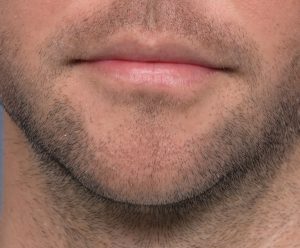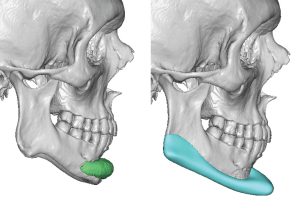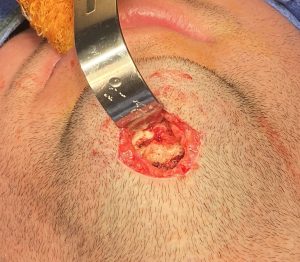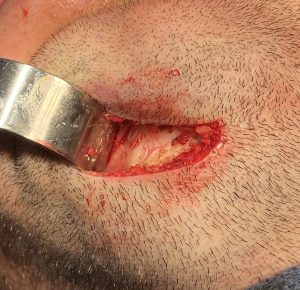Background: Chin implants are the most common form of aesthetic facial augmentation and have been used ion various forms for more than a half century. Despite their frequent use by a wide variety of surgeons there remain numerous misconceptions about their placement, implant selection and the biologic response to them. This particular case study helps provide some clarity on a number of chin implant issues.
Case Study: This young male desired to undergo implant augmentation to improve his weak chin and jawline. He wanted improved chin projection as as well as a more square chin shape. He felt a sliding genioplasty was too invasive and preferred an intraoral approach. He went out of the US for the surgery.
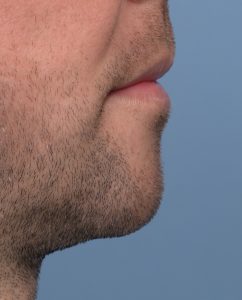

The concept of scarless intraoral chin implant placement has its obvious appeal but all too often the implant position ends up high. This does not allow the implant to exert its full horizontal projection effect and can even obliterate the labiomental fold. Some patients may even feel a full in the depth of the intraoral vestibule inside the lower lip. Making sure the dissection is done around the curve of the bottom part of the chin bone and using screw fixation to hold it down into place will avoid these problems.
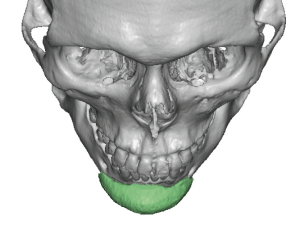
While it is obvious that an anatomic rounded shape implant can not make the chin more square why was it then used based on the patient’s request? In the short chin a large round implant is only going to make it more round or pointy as the projection is increased.

Some male patients with inadequate chin implant results will graduate to a custom implant to more assuredly improve the existing implant problems. That often encourages a more complete lower third of the face augmentation rather than just the chin. In making such an implant design the chin can definitively be made more square.
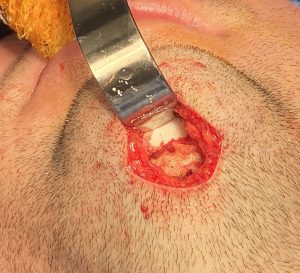
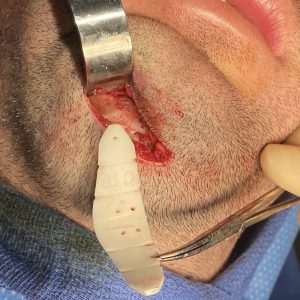
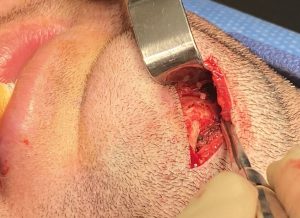
The concept of bone erosion, most commonly associated with chin implants due to their frequency of use, can be seen there as a biologic misinterpretation. Erosion implies an inflammatory reaction to an irritant that melts bone, creates reactive granulation tissue and does not stop until the source is removed. This is clearest not what is being seen here. This is a clear example of passive bone remodeling to the pressure of an implant placed between the hard bone surface and the tight overlying soft tissues. This is a passive process which is seen by crisp bone edges, no signs of any inflammatory changes and the reparative response of bone over- and ingrowth. Essentially the body has accepted the implant but must adapt to its presence into a tissue site which had not been developed to contain it. The higher the implant is on the chin bone the greater the imprinting and reparative bony response that is seen nearer the concave surface of the upper chin bone.
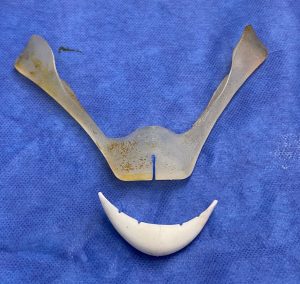
Key Points:
1) Highly positioned chin implants exhibit the highest occurrence of bone imprinting and bony ingrowth. (confirming the biologic misinterpretation of bone erosion)
2) Anatomic round chin implants create a pointy chin not a square one.
3) A custom jawline implant is a frequent replacement for indesired chin implant results.
Dr. Barry Eppley
World-Renowned Plastic Surgeon



